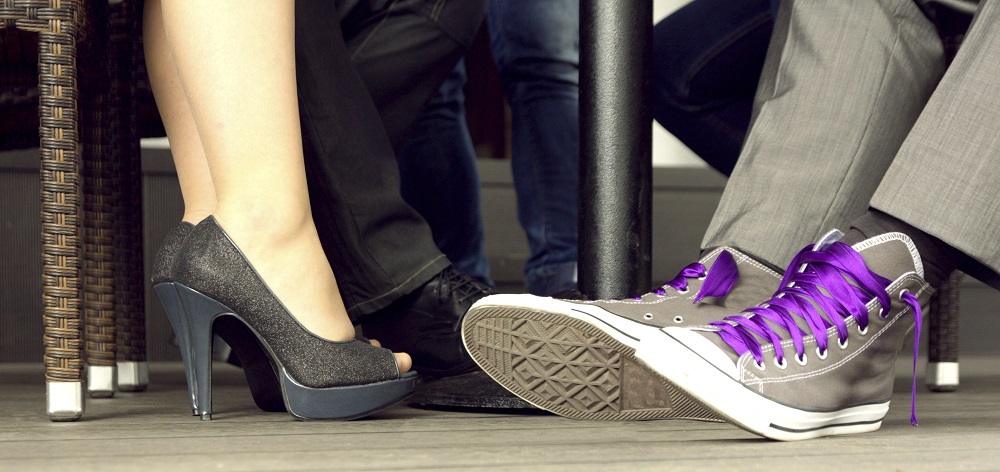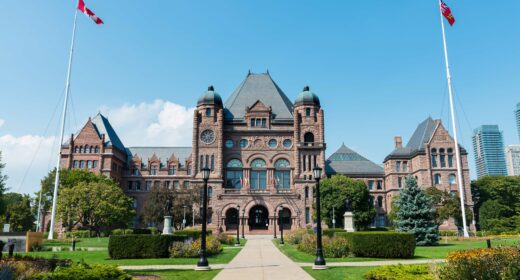In recent months, there has been significant international media coverage on differential treatment of men and women with respect to workplace attire.
In England, MPs are pushing for legislation that allows the state to fine employers that require differential dress codes for women, following the case of a London receptionist who complained after being sent home for not wearing high heels. In Canada there have been a number of stories concerning servers with bloodied feet following hours of working in high heels, as well as on women turning down interviews after being told to wear a “full face of makeup” to the meeting. It all boils down to the fact that in many different industries there are often significantly more stringent requirements for women’s dress and appearance than there are for their male counterparts. While women are required to wear makeup, have their hair done, wear short skirts or low-cut tops, and wear high heels, male employees are not subject to such onerous, and often uncomfortable, requirements.
While public backlash seems quick to condemn these sexist requirements, and human rights legislation protects most workers from discriminatory practices, what rights do unionized employees have with respect to differential clothing requirements for men and women?
In the unionized context, the collective agreement reigns supreme. Unionized employees are not subject to individual employment agreements with their employer, as are non-unionized employees. Rather, all terms of employment in the unionized context are set by the collective agreement. While it is unlikely that a collective agreement will have obviously discriminatory dress or appearance codes contained within it, the collective agreement may contain some dress code requirements (usually neutral), and will almost always contain a “management rights clause”. It is under these management rights clauses that employers typically create dress code requirements that distinguish between men and women.
Access to provincial or federal human rights bodies to protect the right to be free from workplace discrimination may not always be available to unionized workers, provided they have an avenue for redress under the collective agreement. But fear not, the grievance process can provide employees with significant remedies to address the issue.
First, unions themselves may bring “policy” grievances on behalf of their workers. This means the union is challenging the employer’s dress code policy as a legitimate exercise of management rights. In such a case, no individual worker will have to be the “face” of the grievance. While our laws protect grievors from backlash for filing grievances, not everyone will feel comfortable asserting their rights against their employer, and a policy grievance offers the anonymity employees might want.
Afflicted employees can also file individual grievances if they feel comfortable enough doing so. If successful in such a grievance, the decision will not only apply to the employee, but will protect others against the same form of discriminatory dress codes.
In either case, the union will fund the grievance through union dues, so employees will not be out of pocket to assert their rights.
But what are the chances of success on such a grievance? For an employer to successfully defend against a grievance regarding discriminatory dress codes, it would have to show that the requirement is a “bona fide occupational requirement”; essentially, that the differential treatment is necessary for employees to be able to perform the functions of their role.
While there are certainly some instances where appearance requirements might be upheld – for example if both men and women were required to wear full faces of makeup from a particular makeup company while working for that makeup company – in most cases it is difficult (if not impossible) to see how any requirement that distinguishes between men and women will be legitimate. What basis could there be for requiring a woman to wear high heels, a short skirt, or makeup in any position? Indeed, in many cases, these requirements may, in fact, be impediments and cause health concerns. To be clear, making female employees more attractive to customers or clients is not a legitimate basis for a dress code requirement. In fact, arbitrators have struck down dress codes on grounds that do not violate human rights, as discussed in further detail here.
If you are concerned about dress code requirements in your workplace, reach out to your union representative or to a labour and employment lawyer for more information on your rights and entitlements.



